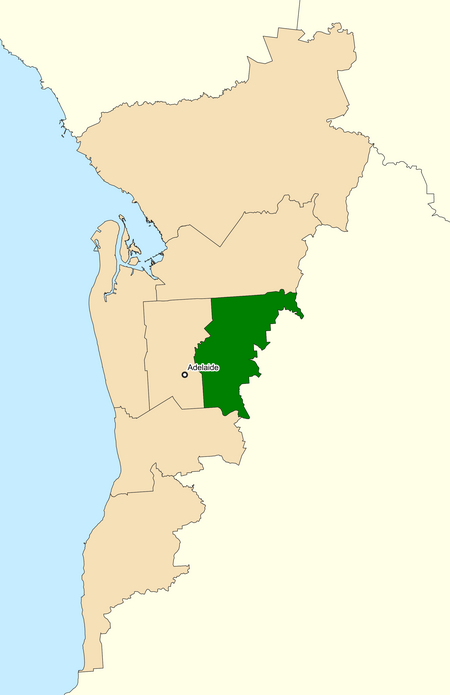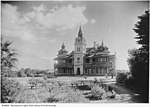Division of Sturt
1949 establishments in AustraliaCharles SturtConstituencies established in 1949Electoral divisions of AustraliaUse Australian English from September 2017

The Division of Sturt is an Australian electoral division in South Australia. It was proclaimed at the South Australian redistribution of 11 May 1949. Sturt was named for Captain Charles Sturt, nineteenth century explorer.
Excerpt from the Wikipedia article Division of Sturt (License: CC BY-SA 3.0, Authors, Images).Division of Sturt
St Bernards Road, Adelaide Campbelltown City Council
Geographical coordinates (GPS) Address Nearby Places Show on map
Geographical coordinates (GPS)
| Latitude | Longitude |
|---|---|
| N -34.894 ° | E 138.674 ° |
Address
Stop 22 St Bernards Road - West side
St Bernards Road
5073 Adelaide, Campbelltown City Council
South Australia, Australia
Open on Google Maps




